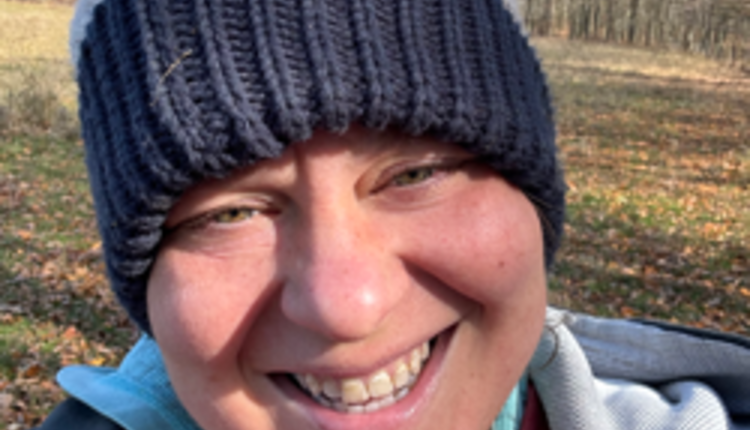In a conversation about animal welfare, or more specifically poor animal welfare, oftentimes the finger gets pointed towards large farms. It seems to be public perception that animals in large herds are cared for in groups and treated as just a number, therefore not given individual attention and reducing animal well-being. This viewpoint leads people to believe that big is bad, and that current trends in the dairy industry are negatively impacting animal welfare.
Farm size, inevitably, is growing as the number of herds continues to decline. In 1970, there were 700,000 operations with milk cows. By 2012, there were less than 50,000, as reported in the April 25, 2013 issue of Hoard's Dairyman. Another trend in the industry is cow housing. In 1996, 40 percent of cows were milked in tie stall barns, while just 11 years later that number was less than 20 percent.
 Dan Weary, with the Dairy Education and Research Center at the University of British Columbia, discussed the relationship between animal welfare and farm size at the American Dairy Cattle Association's Joint Annual Meeting in Indianapolis, Indiana last week. His message was that, based on research and large herd management opportunities, growing farm size is not directly correlated with declining animal welfare.
Dan Weary, with the Dairy Education and Research Center at the University of British Columbia, discussed the relationship between animal welfare and farm size at the American Dairy Cattle Association's Joint Annual Meeting in Indianapolis, Indiana last week. His message was that, based on research and large herd management opportunities, growing farm size is not directly correlated with declining animal welfare.
A majority of welfare research focuses on lameness because, according to Weary, this is an area producers are looking for more information. To measure lameness on farms, we look at the incidence of lame cows and cows with hock lesions. Data collected on farms in California, the Northeastern United States and Canada showed a slightly negative relationship between increasing farm size and lameness rates. Lameness incidence declined as farm size grew, and factors most often affecting lameness were facility design and stall bedding.
Animal welfare can also be measured by how sick cows are identified and treated. Larger farms may be able to afford and utilize technology to better care for animals. One example Weary mentioned was a farm that uses automatic calf feeders may notice a decline in the number of unrewarded visits (visits where a calf comes to the feeder but is not eligible for a feeding at that time), signaling a sick calf. They will be able to identify this sick calk sooner, and treat her sooner, likely improving her treatment success and overall well-being.

Larger herds may also have more resources to train employees, hire employees with more specialized training and skills, offer performance incentives, and have more formal SOP's in place. Larger farms may be able to afford more technologies that provide data to be used to help make management decisions for individual animals.
The bottom line is that we need to be smarter and design barns for the needs of the cow, noted Weary. He feels we need to create solutions to improve the lives of animals. He explained that a small herd size is no guaranty for good care. Likewise, a larger herd size doesn't assure animal welfare either. There are small and large farms that excel at animal care and well-being, and there are small and large farms that have room to improve. Every farm, everywhere, needs to consider animal well-being in their day-to-day operations.
 The author is an associate editor and covers animal health, dairy housing and equipment, and nutrient management. She grew up on a dairy farm near Plymouth, Wis., and previously served as a University of Wisconsin agricultural extension agent. She received a master's degree from North Carolina State University and a bachelor's from University of Wisconsin-Madison.
The author is an associate editor and covers animal health, dairy housing and equipment, and nutrient management. She grew up on a dairy farm near Plymouth, Wis., and previously served as a University of Wisconsin agricultural extension agent. She received a master's degree from North Carolina State University and a bachelor's from University of Wisconsin-Madison.
Farm size, inevitably, is growing as the number of herds continues to decline. In 1970, there were 700,000 operations with milk cows. By 2012, there were less than 50,000, as reported in the April 25, 2013 issue of Hoard's Dairyman. Another trend in the industry is cow housing. In 1996, 40 percent of cows were milked in tie stall barns, while just 11 years later that number was less than 20 percent.
 Dan Weary, with the Dairy Education and Research Center at the University of British Columbia, discussed the relationship between animal welfare and farm size at the American Dairy Cattle Association's Joint Annual Meeting in Indianapolis, Indiana last week. His message was that, based on research and large herd management opportunities, growing farm size is not directly correlated with declining animal welfare.
Dan Weary, with the Dairy Education and Research Center at the University of British Columbia, discussed the relationship between animal welfare and farm size at the American Dairy Cattle Association's Joint Annual Meeting in Indianapolis, Indiana last week. His message was that, based on research and large herd management opportunities, growing farm size is not directly correlated with declining animal welfare.A majority of welfare research focuses on lameness because, according to Weary, this is an area producers are looking for more information. To measure lameness on farms, we look at the incidence of lame cows and cows with hock lesions. Data collected on farms in California, the Northeastern United States and Canada showed a slightly negative relationship between increasing farm size and lameness rates. Lameness incidence declined as farm size grew, and factors most often affecting lameness were facility design and stall bedding.
Animal welfare can also be measured by how sick cows are identified and treated. Larger farms may be able to afford and utilize technology to better care for animals. One example Weary mentioned was a farm that uses automatic calf feeders may notice a decline in the number of unrewarded visits (visits where a calf comes to the feeder but is not eligible for a feeding at that time), signaling a sick calf. They will be able to identify this sick calk sooner, and treat her sooner, likely improving her treatment success and overall well-being.

Larger herds may also have more resources to train employees, hire employees with more specialized training and skills, offer performance incentives, and have more formal SOP's in place. Larger farms may be able to afford more technologies that provide data to be used to help make management decisions for individual animals.
The bottom line is that we need to be smarter and design barns for the needs of the cow, noted Weary. He feels we need to create solutions to improve the lives of animals. He explained that a small herd size is no guaranty for good care. Likewise, a larger herd size doesn't assure animal welfare either. There are small and large farms that excel at animal care and well-being, and there are small and large farms that have room to improve. Every farm, everywhere, needs to consider animal well-being in their day-to-day operations.
 The author is an associate editor and covers animal health, dairy housing and equipment, and nutrient management. She grew up on a dairy farm near Plymouth, Wis., and previously served as a University of Wisconsin agricultural extension agent. She received a master's degree from North Carolina State University and a bachelor's from University of Wisconsin-Madison.
The author is an associate editor and covers animal health, dairy housing and equipment, and nutrient management. She grew up on a dairy farm near Plymouth, Wis., and previously served as a University of Wisconsin agricultural extension agent. She received a master's degree from North Carolina State University and a bachelor's from University of Wisconsin-Madison.










